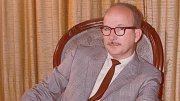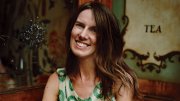On weekday afternoons, John Corcoran’s bike often disappeared from his Newton garage. For hours, he rode along the Charles River, heading from Newton into Boston as the little stream expanded into a broad basin. It was not until the sun began to set on September 23, 2024, that his wife, Barbara Bower, started to suspect something was wrong. Corcoran rarely biked after dark, recalls his son, Jack Corcoran ’25. The family soon learned that an SUV drove up onto a sidewalk and killed John during that final evening ride. (Read more in “Safe Streets.”)
Jack Corcoran traces John’s active lifestyle to John’s father, Paul Corcoran Jr. ’54. During Jack’s childhood summers, the Corcorans would visit Paul on the Cape, cycling on bike paths there. Paul stayed active well into his early 80s—Jack remembers gifting him tennis balls for his birthdays. “I think that inspired my dad to be very active,” he says.
Many of Jack’s childhood memories with his father took place outdoors. On weekends, the Corcorans walked around Great Blue Hill, exploring the trails and viewing animals at the small zoo. At the top of the hill, they looked out at the Boston skyline.
Sometimes, the family set out on bikes together. Together, they rode the Charles River trail out to the path’s end in Waltham. During the COVID-19 pandemic, that ride, and walking the family Havanese, Juliet, “breathed a lot of life into a time when we were all very alone and restricted,” Jack says.
When Jack matriculated in 2021, his father was not far away, physically or mentally. “On a whim, I could call my parents, and they could just drive me home for a quick dinner,” he says. The last time Jack saw his father was at one such dinner, a September outing with his sister, Christine Corcoran ’26. “It was sort of spontaneous,” Jack says. “He just wanted us to celebrate the beginning of the semester.”
Jack is frustrated that it took his father’s death to improve a known problem spot on the trail. “This really did not have to happen,” he says. “We have a chance now to prevent this from happening in the future, and so we have to take every step we can to make sure that happens.”








